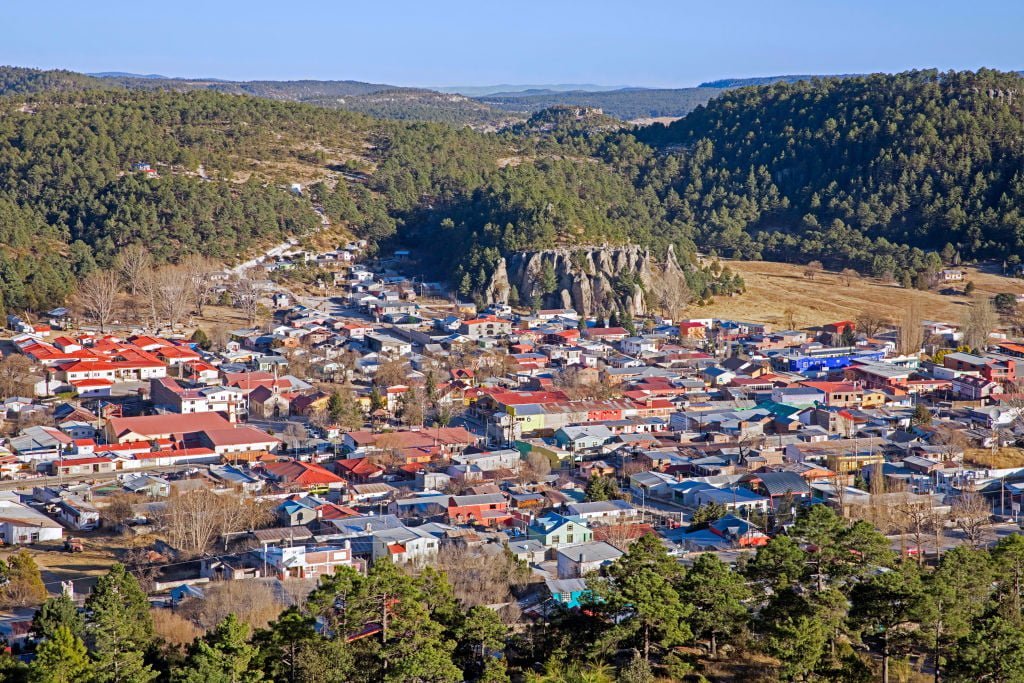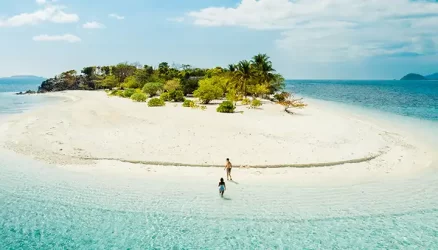Best Mexican Mountain Towns to Visit

Mexico has numerous mountain chains that run from north to south and east to west. Some depict snowy landscapes that last all year, while others are home to rattlesnakes and tall cacti. There are those with daring cliffs and unusual copper-colored rocks, and those that have long been home to indigenous communities. Some are simply isolated mountains, mostly dormant volcanoes, that welcome hikers interested in both their beauty and their legends.
In addition to their majestic beauty, many of these mountains have charming towns, providing visitors with a one-of-a-kind experience of discovering new traditions or crafts, sampling local cuisine, and exploring nature through hikes or climbs.
#1 Bernal, Querétaro

Peña de Bernal, part of the Sierra Gorda mountain range, is the world’s third largest monolith — a mountain made up of a single massive stone or rock. The mountain can be seen from every corner of Bernal, and outdoor activities such as hiking and mountain climbing are the ultimate attractions. Because it is widely believed that the monolith brings positive energy to the town, there are numerous spas that offer energetic treatments so that visitors can make the most of their trip and bring back a reenergized attitude as a souvenir. Independencia Street is the main street of this magical town, where you can find colorful houses, restaurants serving traditional dishes (try the barbacoa — sheep meat steam-cooked in an underground oven), crafts stores, and museums, such as the Museum of the Mask. If you’re looking for a traditional craft, look no further than the wool woven pieces, which range from rugs to quilts to coats. Weaving on looms is a century-old tradition that lives on in this town. If you have a sweet tooth, you must try the goat’s milk chewy sweets before leaving.
#2 Real de Catorce, San Luis Potosí

Real de Catorce, also known as a ghost town, has a number of legends surrounding its past. Some discuss the region’s silver mining history, while others tell the story of bandits, and still others follow the magical stories typical of the Huichol culture, the indigenous community that still lives there. Because of its mining history, this area has some unique structures, such as the iron kiosk that adorns Plaza Hidalgo, as well as unique attractions, such as the now-defunct mines themselves. Real de Catorce is located in one of San Luis Potosi’s most arid zones, making it a desert adventure. To explore the desert, a vehicle called Willys, which is similar to a Jeep, is designed to withstand the difficult terrain.
Accommodation in Real de Catorce
#3 Tepoztlán, Morelos

This is a town engulfed in a magical and mystical atmosphere. It is located in the Tepozteco National Park, in the foothills of the Tepozteco mountain. The mountain is surrounded by many legends and beliefs. Pre-Hispanic cultures were said to believe that the Aztec god Quetzalcoatl was born here. However, according to some recent urban legends, UFOs fly over it. Hiking to the top will reveal a pre-Hispanic pyramid built to worship the Crops god. The bohemian energy of the cobblestone streets welcomes visitors who want to discover local artists and traditional crafts, especially on weekends when a crafts market is set up.
Honoring pre-Hispanic cultures is very important here, so many of the crafts are made in the traditional manner. Traditional dishes can also be sampled at the market. Following ancient customs, there are several spas and wellness centers that offer treatments based on ancient knowledge, such as temazcales, which are purifying sweat lodges.
Other attractions in town include the Former Convent of the Nativity, which was designated a UNESCO World Heritage Site in 1994, and the Carlos Pellicer Prehispanic Art Museum, which houses Mayan, Olmec, and Zapotec artifacts.
#4 Cuetzalan, Puebla

This town was named after the country’s most famous bird, the quetzal, which was idolized by many ancient cultures. Although there are no longer any quetzals in the area, the mountains are still home to a variety of other bird species that draw birdwatchers. There are numerous adrenaline-pumping activities available, ranging from rappelling to a zip line that crosses the Cuichat River. Many pre-Hispanic traditions have survived in this town, such as the Quetzal Dance ritual, which has been designated as Intangible Cultural Heritage. Another is the trading tradition, so on weekends, there is a market where people trade local products without using money. To learn more about the history of the cobblestoned town, Cuetzalan’s Cultural Center takes visitors on a journey through the town’s history and traditions.
#5 Zacatlán de las Manzanas, Puebla

As you might expect, apples are a big deal in this town. It’s one of the country’s main apple producers; there’s an apple festival every summer, and cider factories open their doors for visitors to see how this fruit is transformed into a refreshing pink drink. Zacatlán is also known for its mystique, owing to its foggy weather and deep forest with cozy cabins, which make it ideal for legends, especially when the temperature drops. As you progress deeper into the mountain, you’ll come across colorful flower beds and fresh waterfalls. There’s also a crystal bridge that takes you above the Los Jilgueros ravine. The natural beauty of the mountain is celebrated in the town’s main square, which features a massive floral clock. The town’s specialty is monumental clocks, so much so that there’s even a Clock Museum that takes visitors through the process of creating such complex machines.
#6 Huasca de Ocampo, Hidalgo

The basaltic prisms hidden in the forest of this mountain town are what distinguishes this location. These natural rock columns are thought to have formed thousands of years ago as a result of the contrast between the hot lava and the cold river water. These 131-foot-tall hexagonally shaped formations were formed by erosion. You can walk to see them, but you might get wet because they’re surrounded by waterfalls. Another option is to take a zip line and enjoy them from above. Huasca de Ocampo has a beautiful collection of old haciendas that speak to the splendor of the town in the past, when it was famous for its silver goods, in addition to its natural riches. Colorful pottery and hand-carved wooden pieces are now among its most beautiful crafts. Although much has changed since Huasca’s beginnings, one thing has not: its magical beliefs. This town is surrounded by fantastic stories, particularly those about forest spirits and goblins.
Accommodation in Huasca de Ocampo
#7 Taxco, Guerrero

Look no further if you are interested in silver goods. Silver is the town’s specialty, and it has dark stone streets and pink quarry architecture. It was once a major mining town, but it is now primarily populated by artisans and jewelry makers who specialize in this precious metal. As a result, it’s an excellent place to find beautiful jewelry at reasonable prices, particularly in the Silver Market, which is only open on Saturdays. The town is known for its steep streets, so walking can be difficult, but the best view is from the very top. To get there, you can take a cable car to the top, where the Monte Taxco hotel is located. When visiting Taxco, don’t miss the Parish of Santa Prisca, which has a dome made of talavera — glazed pottery craft — and pink quarry towers; and the 65-foot-tall Christ statue that overlooks the city from the Atachi mount.
#8 Creel, Chihuahua

The Copper Canyons (Barrancas del Cobre) are unlike any other. The copper-green color and steep canyons covered in pine trees, oaks, and cacti make it the ultimate adventure destination. The canyons are part of the Sierra Tarahumara, which is home to the Rarámuris indigenous community. It’s such a large area that the only way to appreciate it from beginning to end is on the Chepe train, which travels along the canyons to allow visitors to take in their full beauty. There are campsites available for those who enjoy outdoor activities, and the canyons are open for hiking, climbing, and mountain biking. There’s also a cable car that connects two ravines and provides breathtaking views. Creel, a small magical town in the Sierra, is the best place to stay when visiting the canyons. You can also learn more about Rarámuri culture here, including their art, which can be found in the Arte Sacro museum, and their crafts, such as basket making.



















